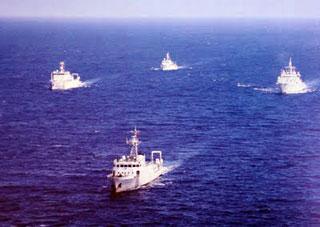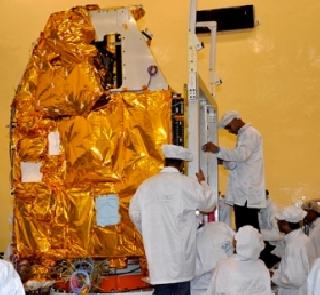
An unrelated file photo.
TOKYO (AP): The United States and Japan moved on Thursday to modernise and expand their defence alliance to counter new 21st century challenges including the continuing threat from nuclear-armed North Korea and potential aggression from China over disputed territory.
Revamping the guidelines of their defence partnership for the first time in 16 years, the allies agreed to position a second early-warning radar in Japan within the next year to help protect against North Korea.
And by next spring, they will deploy new long-range surveillance drones to help monitor disputed islands in the East China Sea, a move that may well raise tensions with Beijing.
The foreign and defence ministers of the two countries also, for the first time, put a price on what Japan will contribute to the relocation of Marines out of Okinawa to Guam and other locations in the Asia-Pacific region.
Japan will pay up to USD 3.1 billion of the move, which includes development of new facilities in Guam and the Northern Mariana Islands.
US Secretary of State John Kerry and US Defence Secretary Chuck Hagel met with Japanese Foreign Minister Fumio Kishida and Defence Minister Itsunori Onodera and afterward laid out the details of the session.
The talks, ahead of President Barack Obama's visits to Indonesia and Brunei next week, were aimed at modernising the American-Japanese alliance that both sides maintain is a cornerstone of peace and stability in North Asia.
"Japan is changing and so is its neighbourhood," Kerry told reporters at a press conference after the meeting. "So we're coming together now to modernise our deep cooperation, through both our military alliances and our diplomatic partnerships, and that is so we can better prevent and respond to the ever-changing threats of the 21st century."
The deep neighbourhood divisions were underscored, even as the meeting went on, when a new naval exercise between the US, Japan and South Korea scheduled for next week was disclosed, provoking a swift response from North Korea.
In a statement, the National Peace Committee of Korea condemned the exercise, which will include the USS George Washington aircraft carrier and its strike group, as reckless saber-rattling.
The new X-band radar system, in fact, is designed to protect the region against the North Korean threat, boosting Japan's ability to track and intercept missiles from across the Sea of Japan.
Officials have stressed it is not directed at China. Kerry acknowledged the threat from Pyongyang, but also said the US was willing to sign a non-aggression pact with North Korea if it gives up its nuclear weapons and complies with international demands.
 Previous Article
Previous Article Next Article
Next Article













The Indian Air Force, in its flight trials evaluation report submitted before the Defence Ministry l..
view articleAn insight into the Medium Multi-Role Combat Aircraft competition...
view articleSky enthusiasts can now spot the International Space Station (ISS) commanded by Indian-American astr..
view article